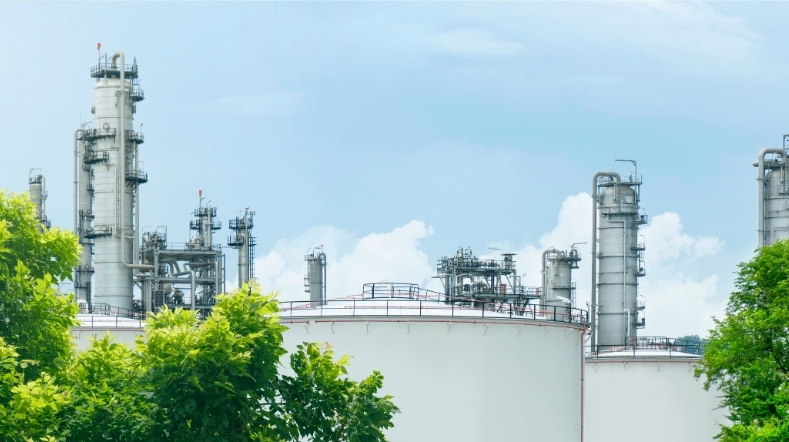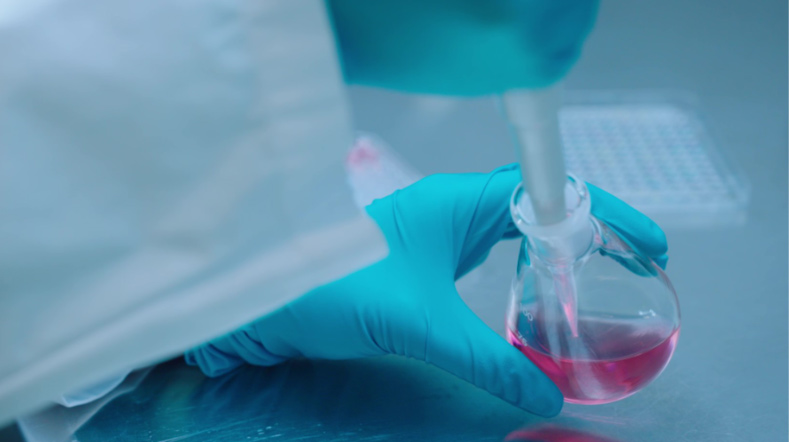
SSbD presents significant opportunities for the Dutch chemical sector to maintain its leadership position
In the chemical sector, the increasing emphasis on sustainability and circularity is progressively shifting towards Safe and Sustainable by Design (SSbD), which integrates safety, sustainability, performance, and cost considerations from the very early stages of innovation. While much has been discussed and written about SSbD, the real challenge lies in its implementation. How can companies effectively apply SSbD, and what opportunities does it present for the Netherlands to maintain its status as a leading chemical nation? Michiel van Kuppevelt from VNCI explores these questions with Wouter Fransman from TNO.
The Netherlands is a major player in the chemical sector, with 45,000 employees across 390 companies generating an annual turnover of €87 billion. The chemical industry contributes 13% to industrial added value, 2% to GDP, and accounts for 18% of goods exports, 80% of which are destined for the EU.
Michiel van Kuppevelt, Policy Advisor on Safe and Sustainable Substances at the VNCI (the Royal Association of the Dutch Chemical Industry), attributes this success to the country's key ports, a high-tech chemical industry, and, most importantly, the longstanding reputation the Netherlands has enjoyed in this sector.
“We are a small, densely populated country, but we boast a high-tech chemical industry. What we have excelled at here is fostering dialogue between industry, knowledge institutions, and government. The Netherlands also has a strong safety culture, which is highly regarded abroad. In substances policy, for instance, the Netherlands, alongside other nations, is a pioneer in Europe.”

“With the emergence of nanomaterials, it became necessary to consider material structures at the early stages of development.”
‘Time is right for SSbD’
Van Kuppevelt has observed a growing interest in SSbD within the industry. “With the emergence of nanomaterials, it became necessary to consider material structures at the early stages of development. About 15 years ago, RIVM and TNO, in collaboration with other European countries, developed substantial knowledge on this topic for the Netherlands and urged the industry to proceed with great caution.
As the focus on sustainability increased, this aspect was incorporated as a second critical component. In the Chemicals Strategy for Sustainability, part of the EU Green Deal, SSbD was promoted for the first time as an innovation strategy for sustainable substances and materials.”
SSbD also aligns with the current momentum. “All the pieces of the puzzle are now falling into place,” explains Michiel van Kuppevelt. “There is a growing recognition that we need an integrated approach to chemicals and materials. We are realising that planetary boundaries are becoming more apparent, and we understand too little about the impact of 'novel entities', as described by the Stockholm Resilience Centre.”
“New legislation, such as the Ecodesign for Sustainable Products Regulation (ESPR), is placing increasing demands on the sustainability of products. The need for circularity and the introduction of the Digital Product Passport (DPP) are also contributing factors. Additionally, there is a growing preference for autonomy. So, the time is indeed right to start implementing SSbD.”
Join our SSbD webinar
On Tuesday 1 October, TNO and VNCI organised a webinar on SSbD. During this webinar, TNO’s Safe and Sustainable by Design approach is presented, we shared the latest insights from VNCI and discussed the opportunities and challenges in practice.
Pragmatic approach to Decision Support
The question is: how do we, as an industry, address this? Wouter Fransman, Principal Consultant at TNO, observes that many companies are still searching for effective ways to implement SSbD. “That’s why, at TNO, we’ve developed a practical 4-step approach based on the most common SSbD frameworks. This approach assists companies in building an effective decision-support approach. We consider health, safety, and sustainability alongside performance and costs at an early stage in the innovation process.”
TNO begins by working with the company to define the product’s performance criteria. The new chemical is then quickly screened for all relevant SSbD parameters using existing information and (machine learning) models. A colour visualisation immediately highlights potential impacts and areas of concern. This forms the basis for a more detailed assessment of specific criteria using data, (in vitro) tests, or models. This further reduces uncertainties and enables companies to make informed decisions regarding product modifications.
Wouter adds, “What’s unique about TNO is our integrated approach. While many consultants specialise in a specific area, TNO brings together chemical developers, toxicologists, exposure scientists, and sustainability experts, all under one roof.”

“We have developed this decision-support approach to align with the innovation phases.”
Early innovation stage provides the greatest benefits
TNO observes that, traditionally in chemistry, safety and sustainability are considered late in the innovation process, even though the early R&D stages offer the most significant economic benefits with SSbD. Wouter Fransman explains, “An innovation process often starts with a hundred different substances, but only one may eventually reach the market. The earlier you identify potential risks, the more money you save.”
“Unfortunately, many wait until they reach the point of no return, where companies have already invested too much to stop the innovation process. Additionally, most companies are reluctant to have an external observer involved at this early stage due to competitive sensitivities.”
For this reason, we recommend that companies incorporate SSbD into their portfolio strategy. “BASF is collaborating with TNO to integrate SSbD into its portfolio management system,” says Fransman. “We have developed this decision-support approach to align with the innovation phases. By continuously adding new information, their scientists can provide increasingly accurate information to support decision-making.”
Learning from success stories
However, the chemical sector is not solely composed of multinationals like BASF. How can smaller companies begin implementing SSbD? Wouter Fransman explains, “At TNO, we also assist many smaller entities by familiarising them with the available data and models so that they can make informed decisions, particularly with future regulations like ESPR in mind. There is a wealth of results from previous use cases and European projects in which TNO has been involved.”
“For the toxicological assessment of substances, TNO maintains a database of around one million substances. This resource enables companies to compare properties and make risk predictions. Additionally, leading companies like BASF often share their data and knowledge to help advance the industry. At TNO we continue to gain valuable experiences with new use cases, building up data and methodological expertise. This is why TNO advocates for the creation of a good practice database to learn from these success stories.”
Opportunities for the Netherlands
Finally, what opportunities lie ahead for the Netherlands if we fully embrace SSbD? “Our country is unlikely to compete in the mass production of chemicals, partly because energy costs here are significantly higher than in the US or Asia,” says Michiel van Kuppevelt.
“Therefore, we will need to continue relying on our innovative strength. Hopefully, good policy can stimulate this. A progressive approach offers many benefits—it ensures that we remain a leading nation. How remarkable would it be if we not only developed a new substance but also, through SSbD, created a comprehensive, sustainable, and safe ecosystem around it, based on an integrated systems approach?”
“Even better, what if we in the Netherlands could make SSbD the hallmark of our chemical industry? If any country can achieve this, it’s us. I also see SSbD as an opportunity for the chemical sector to become more transparent. The sector needs a positive narrative that demonstrates to the public what we are doing—that we are fully committed to developing clean, safe and sustainable products that contribute to our society.”
Paper Safe and Sustainable by Design
Read all about the topic of safe and sustainable chemicals in our paper. 'The future of chemicals is safe and sustainable by design.'
Get inspired
Prospective Life Cycle Assessments for future-proof product design


Knowledge advantage in SSbD offers opportunities for Dutch chemical companies


The future of chemicals is Safe and Sustainable by Design


BASF and TNO collaborate on Decision Support for Safe and Sustainable by Design


Safe and sustainable chemicals drive business opportunities and societal transitions




